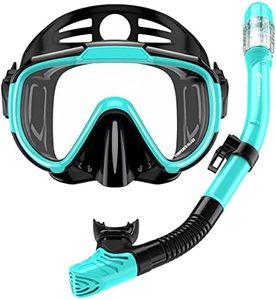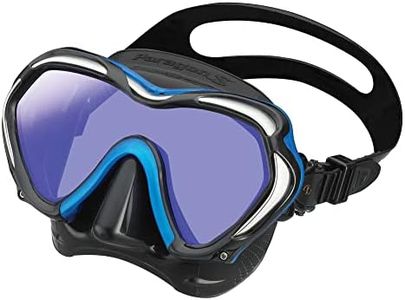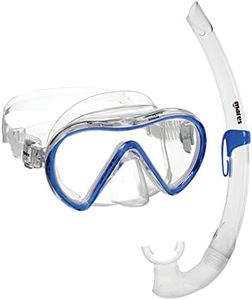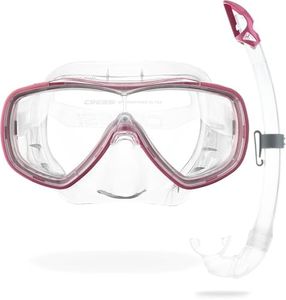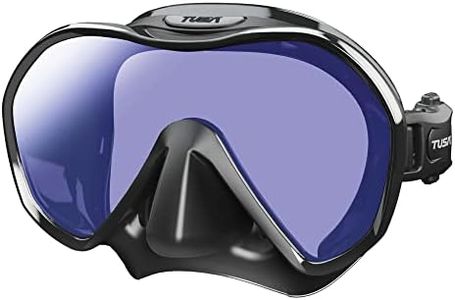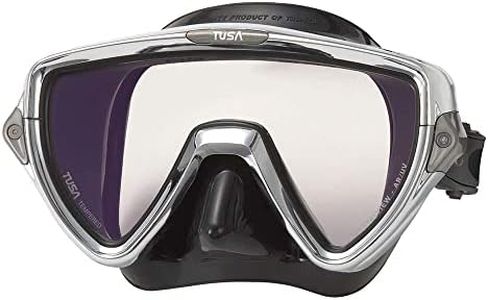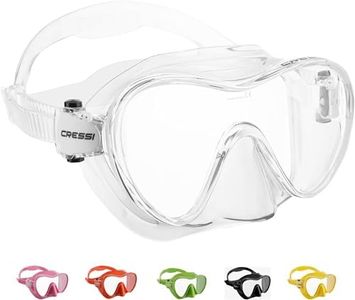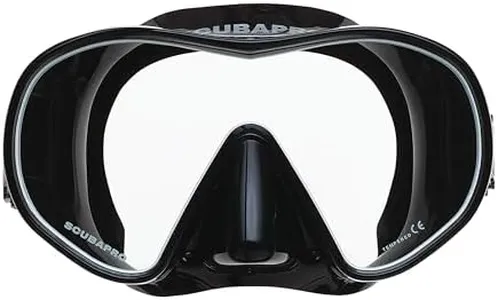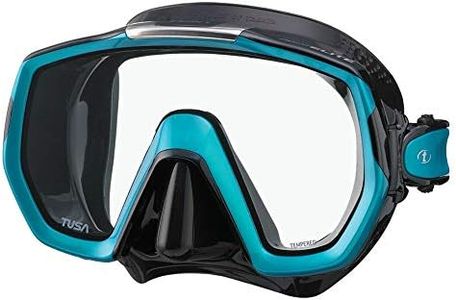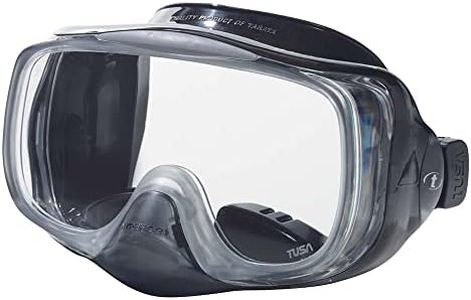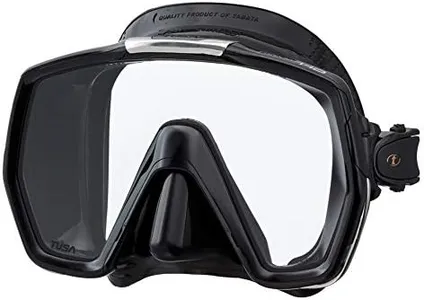We Use CookiesWe use cookies to enhance the security, performance,
functionality and for analytical and promotional activities. By continuing to browse this site you
are agreeing to our privacy policy
10 Best Scuba Mask
From leading brands and best sellers available on the web.Buying Guide for the Best Scuba Mask
Choosing a scuba mask is an important step for anyone planning to explore underwater. A good mask not only keeps water out but also provides a clear and comfortable view. The right fit ensures you enjoy your dive without annoying leaks or discomfort. When picking a scuba mask, it’s helpful to know the key factors that affect both comfort and performance. Below, you'll find explanations for the most important features to consider, which will help you match the mask to your needs and activities.Fit and SealFit and seal refer to how well the mask sits on your face and how effective it is at keeping water out. This is crucial, because a mask that doesn’t fit well can leak, fog up, or become uncomfortable to wear for long periods. Masks generally come in different shapes and sizes, with silicone skirts that form the seal against your skin. To find the best fit, you should try on a few masks and check how they feel without the strap—simply placing the mask on your face and inhaling slightly should create a gentle suction. A good fit won’t pinch your nose or leave gaps. If you have a smaller or larger face, look for masks specifically designed for those sizes to ensure the best seal and comfort.
Lens TypeLens type determines how you’ll see under water and can impact your overall experience. Masks can have single, double, or multiple lenses, and may include features like ultra-clear glass or tempered safety glass for better visibility and durability. Single-lens masks usually offer a more open view, while double-lens styles can be lower in profile, sitting closer to your face, which helps reduce internal volume. If you wear prescription glasses, you might want a mask that supports prescription lenses. Think about whether you value a wide, unobstructed view or if you need a compact mask that’s easier to clear.
Field of ViewField of view is how much you can see while wearing the mask. A wider field of view lets you see more of your surroundings, which is helpful for enjoying the scenery and keeping track of your dive buddy. The shape and size of the mask, as well as the lens design, all play a role here. If you enjoy exploring and want an immersive experience, look for masks with wider, curved lenses or low-profile frames. Those diving in tighter spaces might prefer a mask with a lower profile for better maneuverability.
Mask VolumeMask volume is the amount of air space inside the mask that sits in front of your face. Low-volume masks are easier to clear (just in case a bit of water sneaks in) and equalize, making them popular with freedivers and those who want less drag. High-volume masks may feel roomier and comfortable for some, but take a bit more effort to clear. If you’re a beginner, consider starting with a mask that offers a comfortable balance—not too low in volume that it feels tight, and not too high that clearing it is hard. Your diving environment and whether you plan to freedive or scuba dive most often can guide your choice.
Strap and Buckle SystemThe strap and buckle system determines how easy it is to adjust your mask and keep it secure. A good strap system holds the mask comfortably in place without slipping or causing discomfort, even with movement or thick hair. Look for masks with easily adjustable, wide silicone straps rather than thinner ones that can dig into your skin. Many modern masks have quick-adjust buckles for fast and easy adjustments above or below water—these are especially handy if you share your gear or need to tweak the fit while diving.
Nose PocketThe nose pocket is the section of the mask that covers your nose, allowing you to pinch it for equalizing pressure underwater. A well-sized nose pocket lets you pinch your nose easily, which is essential as you descend and need to balance ear pressure. If the mask’s pocket is too small or hard to reach, equalizing can become uncomfortable or difficult. Test how easy it is to pinch your nose before selecting.
Skirt MaterialThe skirt is the soft part of the mask that sits against your face and creates the seal. Most quality masks use soft silicone because it’s comfortable, flexible, and forms a reliable seal. Cheaper masks sometimes use harder plastics or rubber, which can be less comfortable and more prone to leaks. A high-quality silicone skirt will last longer, feel better against your skin, and help prevent leaks, making it a wise choice for most divers. If you have sensitive skin, look for hypoallergenic silicone.
